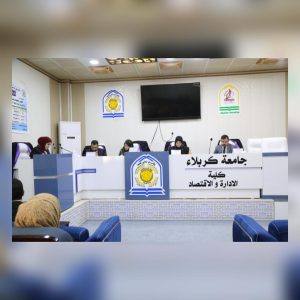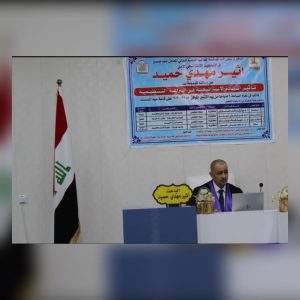(Estimating a logistic Model for a Multi-level Dependent Variable with Practical Application)
A Thesis
submitted to the council of the college of administration and economics – university of kerbala as a partial fulfillment of the requirements for the degree of master of the science in statistics
From before
Toqa Abdul Muhammed
Supervised by A. Dr . Abdul hussian. H . HABEAB . AL-Tai
Statistics have formed an extended hand that provides its services over time to other sciences and a tributary that contributes to analyzing the results of studies in various fields. Improving the efficiency of the experiment and determining the factors affecting the course of the experiment and its development, and others.
This research aims to estimate a logistic regression model for a dependent variable (multi-response) (Yijk), depending on descriptive variables to know the extent of their impact on the dependent variable (understudy), where traditional estimation methods were used, including (the method of greatest possibility (MLE) and the method of squares) The method of artificial neural networks (ANN) and genetic algorithm (GA) method, and then compare between the methods to find out the best and most efficient of them to obtain the efficient capabilities to rely on them to determine the dimensions and variables of the phenomenon (the subject of the study ).
Theoretically, everything related to the logistic regression model for a dependent variable (multi-response) (Yijk) and the estimation methods used in the research mentioned above, as well as the comparison measures that were adopted for differentiation, which are (mean error squares [MSE] and mean absolute error [MAE]) were reviewed.
Practically to achieve the research objectives, a simulation experiment was conducted for different sample sizes that fit the experience of the practical application to reach the optimal method and to know the changes that occur in the experimentation process. Among the methods used in the estimation process, it was also applied to real data related to a living laboratory experiment of an insect (date moth). All the aforementioned methods were used in the estimation process on the applied side as well, not only in the experimental side to match the estimation methods, where the results of the applied side showed The method of artificial neural networks also outperforms its peers, and this is consistent with the experimental side, which indicates the suitability of the estimation method with the logistic regression model.
Among the most important conclusions that have been reached is the possibility of converting the logistic regression model from a nonlinear model to a linear model, as well as the superiority of the method of artificial neural networks [ANN] in the experimental and applied aspect over the rest of the methods used, as well as it was concluded that the volumes of Small samples have a big role and a clear impact in improving the capabilities.































































